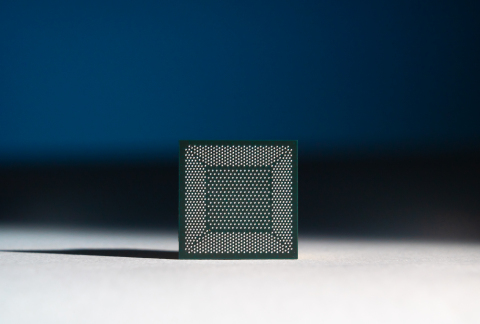SANTA CLARA, Calif. — (BUSINESS WIRE) — March 16, 2020 — What’s New: In a joint paper published in Nature Machine Intelligence, researchers from Intel Labs and Cornell University demonstrated the ability of Intel’s neuromorphic research chip, Loihi, to learn and recognize hazardous chemicals in the presence of significant noise and occlusion. Loihi learned each odor with just a single sample, without disrupting its memory of previously learned scents. It demonstrated superior recognition accuracy compared with conventional state-of-the-art methods, including a deep learning solution that required 3,000 times more training samples per class to reach the same level of classification accuracy.
This press release features multimedia. View the full release here: https://www.businesswire.com/news/home/20200316005122/en/

A close-up photo shows Loihi, Intel’s neuromorphic research chip. Intel’s latest neuromorphic system, Pohoiki Beach, will be comprised of 64 of these Loihi chips. Pohoiki Beach was introduced in July 2019. (Credit: Tim Herman/Intel Corporation)
“We are developing neural algorithms on Loihi that mimic what happens in your brain when you smell something. This work is a prime example of contemporary research at the crossroads of neuroscience and artificial intelligence and demonstrates Loihi’s potential to provide important sensing capabilities that could benefit various industries.”
–Nabil Imam, senior research scientist in Intel’s Neuromorphic Computing Lab
About the Research: Using a neural algorithm derived from the architecture and dynamics of the brain’s olfactory circuits, researchers from Intel and Cornell trained Intel’s Loihi neuromorphic research chip to learn and recognize the scents of 10 hazardous chemicals. To do so, the team used a dataset consisting of the activity of 72 chemical sensors in response to these smells and configured the circuit diagram of biological olfaction on Loihi. The chip quickly learned the neural representation of each of the smells and recognized each odor, even when significantly occluded, demonstrating a promising future for the intersection of neuroscience and artificial intelligence.
More Context: How a Computer Chip Can Smell Without a Nose | Nature Machine Intelligence | Neuromorphic Computing at Intel | Intel Labs
About Intel
Intel (Nasdaq: INTC) is an industry leader, creating world-changing technology that enables global progress and enriches lives. Inspired by Moore’s Law, we continuously work to advance the design and manufacturing of semiconductors to help address our customers’ greatest challenges. By embedding intelligence in the cloud, network, edge and every kind of computing device, we unleash the potential of data to transform business and society for the better. To learn more about Intel’s innovations, go to newsroom.intel.com and intel.com.
© Intel Corporation. Intel, the Intel logo and other Intel marks are trademarks of Intel Corporation or its subsidiaries. Other names and brands may be claimed as the property of others.
View source version on businesswire.com: https://www.businesswire.com/news/home/20200316005122/en/
Contact:
Alexa Korkos
415-706-5783
alexa.korkos@intel.com

